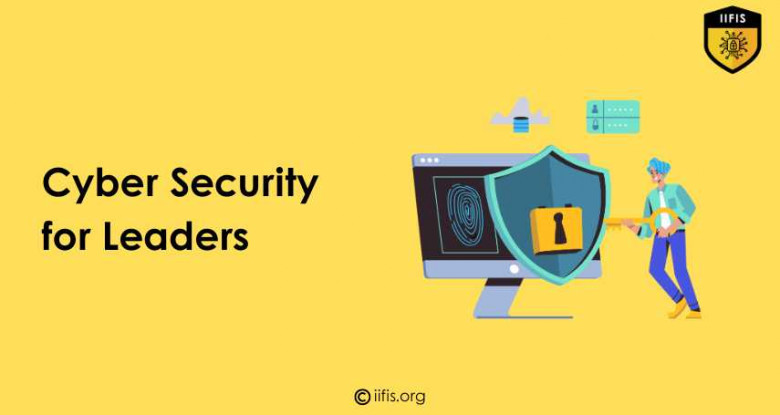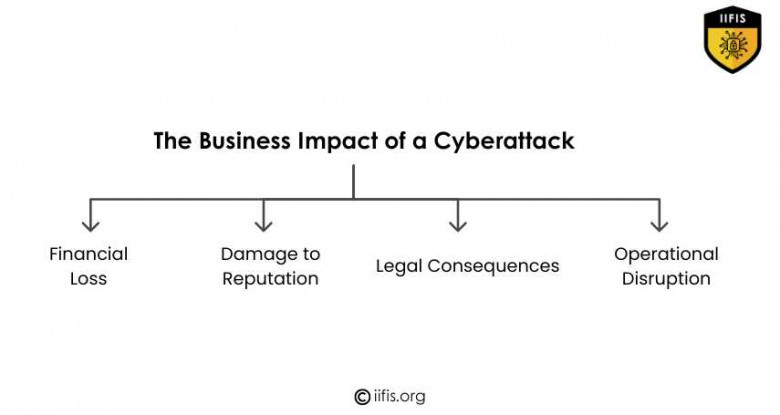views

Cybersecurity is not just an IT issue; it's a leadership issue. From CEOs to department heads, every leader must understand the basics of cybersecurity to protect their organizations and guide their teams responsibly. As data breaches become more frequent and sophisticated, leaders must be proactive, informed, and prepared.
This is designed to help leaders understand what cybersecurity is, why it matters, and what steps they can take to lead effectively in this space.
Why Cybersecurity Matters to Leaders
The goal of cybersecurity is to defend networks, systems, and data against online threats. These attacks have the potential to disrupt operations, steal confidential information, and harm the reputation of your company.
As a leader, you are accountable for the security of your company's digital assets in addition to financial results. Financial loss, legal repercussions, and diminished customer trust are all possible outcomes of a cyber event. Leadership engagement is therefore important.
Nowadays, cybersecurity is more than simply a tech team's responsibility. It's important for business.
Common Cyber Threats Every Leader Should Know
Understanding the threats your organization faces is the first step toward protecting it. Here are some common cyber threats:
Phishing involves tricking people into revealing sensitive information like passwords or credit card numbers through fake emails or websites.
2. Ransomware
This type of malware locks you out of your system until you pay a ransom. Even if you pay, there’s no guarantee you’ll get access back.
3. Insider Threats
Sometimes, threats come from inside the organization – disgruntled employees, careless actions, or stolen credentials.
4. Data Breaches
A data breach occurs when unauthorized individuals gain access to confidential data. This could lead to legal issues and loss of reputation.
5. Social Engineering
Hackers manipulate people into giving away confidential information. It’s about tricking the human, not the machine.
The Business Impact of a Cyberattack
If a cyberattack is successful, there could be serious consequences:
-
Financial Loss: Recovery costs, lost revenue, and fines from cyberattacks can total millions.
-
Damage to Reputation: Clients may stop trusting you and do business with someone else.
-
Legal consequences: Penalties and legal action may result from breaking the law.
-
Operational Disruption: Attacks have the ability to stop operations, resulting in lost productivity and downtime.
Cybersecurity is a Leadership Responsibility
Too often, leaders assume cybersecurity is purely a technical issue. This mindset must change.
Leadership sets the tone. If leaders take cybersecurity seriously, so will their teams. If they don’t, neither will the organization.
Here are key leadership responsibilities:
-
Creating a Culture of Security: Promote safe behavior across the organization.
-
Allocating Resources: Invest in the right tools, training, and staff.
-
Making Cybersecurity a Strategic Priority: Include it in business goals and decisions.
-
Being Prepared for Incidents: Know how to respond when (not if) something happens.
Practical Steps Leaders Can Take Today
Being a cybersecurity leader doesn't require you to be an expert in technology. The following are easy, doable actions you can take:
1. Ask the Right Questions
-
Are we ready for an online attack?
-
How frequently are our security systems tested and updated?
-
Who is in charge of our cybersecurity strategy?
2. Get Educated
Keep yourself informed. Participate in briefings. Read up on the latest dangers. Participate in leadership-oriented cybersecurity workshops.
3. Support Regular Training
Make certain that your staff members are continuously trained to recognize and steer clear of dangers such as phishing.
4. Backup and Recovery Plans
Make sure your company has a tried-and-true recovery plan in place and frequently backs up data.
5. Implement Strong Password Policies
Promote the use of complicated passwords and multi-factor authentication. Regularly change them.
6. Work with Experts
Don't attempt to do everything on your own. Consider third-party audits while collaborating with your cybersecurity or IT staff.
How to Build a Cybersecurity Culture
The top is where culture begins. You have an impact on how seriously your team takes cybersecurity as a leader.
Be Visible and Vocal
In team briefings, mailings, and meetings, discuss cybersecurity. Make your staff aware of its importance.
Celebrate Compliance
Teams or individuals who adhere to best practices should be rewarded and acknowledged.
Make it Easy to Report
Employees should be encouraged to report any questionable communications or situations. Create a blameless atmosphere.
Keep It Simple
Make sure your policies are written simply. When people understand the rules, they are more likely to follow them.
Legal and Regulatory Responsibilities
Depending on your industry, there are laws and regulations you must follow. Some common ones include:
-
GDPR (Europe)
-
HIPAA (Healthcare - USA)
-
PCI-DSS (Payment Card Industry)
-
ISO 27001 (International Standard)
Failure to comply with these can result in serious fines. Make sure your organization is up to date.
Crisis Management: What to Do If You're Attacked
No matter how hard you try, attacks can still occur. Half the fight is won when you are ready.
Step 1: Stay Calm
Panic makes the situation worse. Observe your incident reaction strategy.
Step 2: Notify Your Team
Notify your leadership and internal response team right away.
Step 3: Contain the Attack
To isolate impacted systems and stop their spread, collaborate with IT.
Step 4: Communicate Transparently
Notify partners, stakeholders, and potential clients if there is a data breach.
Step 5: Learn and Improve
Examine what happened after the incident and make the necessary updates to your training and procedures.
Certifications That Can Help Leaders Understand Cybersecurity
Even if you're not an IT professional, some certifications can help you understand the essentials and show commitment to cybersecurity. One strong option is:
IIFIS Cyber Security for Leaders
This certification is designed for leaders and non-technical professionals who need to understand cybersecurity concepts, strategies, and risk management. It covers:
-
Cyber risk basics
-
Security policies
-
Business continuity
-
Legal and ethical issues
In today's digital economy, cyber threats are everywhere. Leaders can no longer afford to take a backseat. You don’t need to know how to code or configure a firewall, but you do need to lead with awareness, responsibility, and readiness.
By taking ownership, setting the tone, and staying informed, you can protect your organization and lead it confidently into the future.






















Comments
0 comment